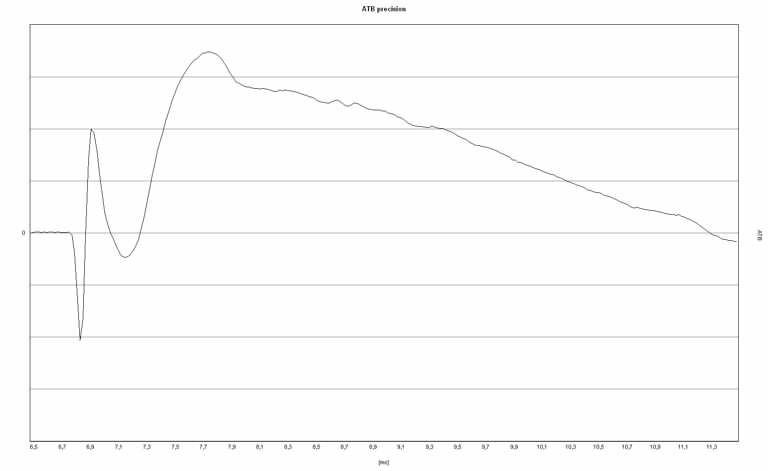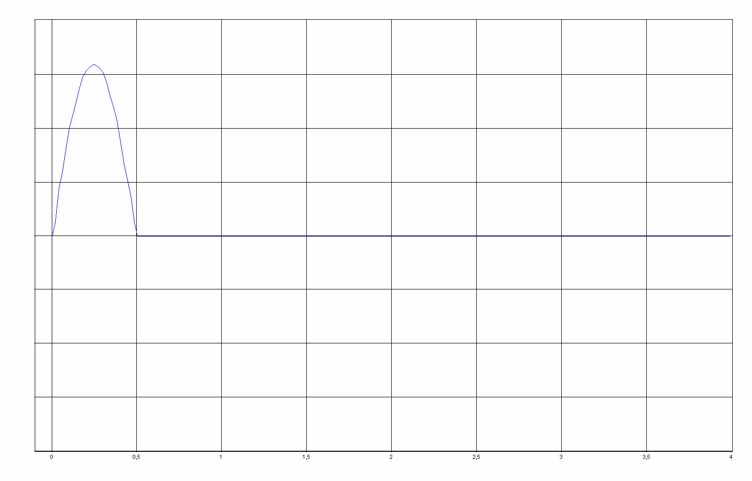Difference between revisions of "Consideration Of Swing Distortions"
(→Das erste Beispiel) |
(Keine Beschreibung eines spezifischen Gerätes, eher Werbung eines Herstellers. Gehört hier nicht rein) |
||
| (One intermediate revision by one other user not shown) | |||
| Line 1: | Line 1: | ||
| − | === | + | {{delete candidate}} |
| − | + | === The first example === | |
| − | + | What effect does the step response have on the distortion of a (music) signal?<br /> | |
| + | The following examples will illustrate that the distortion of an input signal is directly related to the step response of a loudspeaker. There is a clear correlation between the distortion of the step response and the distortion of all other signals / sounds. The characteristic with which loudspeakers distort signals is evident in every signal shape, i.e. regardless of whether it is a square wave, a sine wave or a complex musical signal. The ear hears pressure fluctuations in a temporal sequence. If you manipulate the time component, you change the signal structure. And what you then hear is always the changed pressure fluctuations. We always hear the effects when pressure waves are time-shifted. Reasoning: Because that's all we can hear! | ||
{| class="wikitable" border="1" | {| class="wikitable" border="1" | ||
|- | |- | ||
| − | |[[ | + | |[[File:Beispiel K step.jpg]] |
| | | | ||
| − | + | A loudspeaker with this step response is measured. It is a coaxial loudspeaker with an additional super tweeter. The super tweeter and the bass-midrange driver are polarized the same. The tweeter within the coaxial speaker is inverted. The first tip up is from the super tweeter.<br /> | |
| − | ''( | + | ''(Note: So-called "super-tweeters" or coupled basses destroy the characteristic of the point source, unless it is already limited by partial oscillations)''.<br /> |
| − | + | With the distortion factor these transient distortions are ''not'' to describe and corresponding measurements capture the problem ''not''. | |
|- | |- | ||
| − | | [[ | + | | [[File:DM 0,5 sinus.jpg]] |
| − | | | + | | On the left we see the test signal of a sine half-wave in two dimensions. The pitch is clearly audible for a single half-wave, i.e. if you shift the base frequency or change the frequency of characteristic dips and peaks, the perception moves with it.<br /> |
| − | + | Below we see the corresponding sound response of the example speaker. The measurement frequency is 3521 Hz. | |
|- | |- | ||
| − | + | [[File:Beispiel K 0,5 sinus 3521 Hz.jpg]] | |
| − | | | + | | In this measurement with a sine half wave all (linear and non-linear) distortions are included. A clear relation to the step response can be seen. The first two peaks pointing downwards are the residue of the inverted half-wave of the tweeter within the coaxial loudspeaker. The correctly poled super-tweeter shows up in the first upward pointing waveform. The amplitude is lower than the original signal. Therefore, not only the volume of the generated signal is lower, but also the dynamics. |
| − | + | As soon as a loudspeaker produces a different vibration than the input signal, it changes the sound! A crossover with wrong polarity or a crossover with a steep flank or drivers with mismatched transfer functions produce false sound waves. You cannot hear the original sound at all. You hear something else, something artificial. | |
|} | |} | ||
| − | === | + | === Other examples === |
| − | + | The following examples show the accuracy of reproducing a half-wave in descending order. The connection with a more or less ideal step response becomes obvious. | |
{| class="wikitable" border="1" | {| class="wikitable" border="1" | ||
|- | |- | ||
| '''[[Myro Whisky]]''' | | '''[[Myro Whisky]]''' | ||
| − | [[ | + | [[File:Whisky09Step.jpg]] |
| − | | [[ | + | | [[File:CE-RC-A,Step.jpg]] |
| − | + | [[Line 1, Cell 3 | |
|- | |- | ||
| − | | ''' | + | | '''Kit speaker with full range driver Vifa BGS119.8'''' |
| − | [[ | + | [[File:CE-RC-A,Step.jpg]]<br /> |
| − | + | The Vifa driver is a bit of a surprise. | |
| − | + | Transient response is impeccable within the physical capabilities of this mini driver. | |
| − | + | The excursion in the high frequency range is not optimal due to the diaphragm resonance, but can keep up with many tweeters.<br /> | |
| − | + | The comparison of the Vifa full range driver with the Myro Whisky is obvious when looking at the measurement diagrams. | |
| − | + | This supports the statement that a signal / time accurate multi-way system behaves like a Beitband with wider transmission bandwidth, much higher level stability and much lower distortion. | |
| − | | [[ | + | | [[File:CE-RC-A,Step.jpg]] |
|- | |- | ||
| − | | ''' | + | | '''DIY project with Tang Band full range driver + 2x Seas WA150 in the bass section''' |
| − | [[ | + | [[File:CE-RC-A,Step.jpg]]<br /> |
| − | + | In the two-way cabinet, the woofers are connected in antiphase. | |
| − | + | With the exception of the frequency response measurement, this is also evident in all other measurements and leads to significant signal distortion. | |
| − | + | The Tang Band full range driver also shows heavy high frequency resonances. | |
| − | | [[ | + | | [[File:TB3Papier+2xSeasWA150,DM0,5,3521.jpg]] |
|- | |- | ||
| − | | ''' | + | | '''Partially active three-way floorstanding loudspeaker with 2 actively driven woofers''' |
| − | [[ | + | [[File:CE-RC-A,Step.jpg]] |
| − | | [[ | + | | [[File:CE-RC-A,DM0,5,3521.jpg]] |
| − | + | [[Line 2, Cell 3 | |
|} | |} | ||
Latest revision as of 13:03, 31 October 2020
The first example
What effect does the step response have on the distortion of a (music) signal?
The following examples will illustrate that the distortion of an input signal is directly related to the step response of a loudspeaker. There is a clear correlation between the distortion of the step response and the distortion of all other signals / sounds. The characteristic with which loudspeakers distort signals is evident in every signal shape, i.e. regardless of whether it is a square wave, a sine wave or a complex musical signal. The ear hears pressure fluctuations in a temporal sequence. If you manipulate the time component, you change the signal structure. And what you then hear is always the changed pressure fluctuations. We always hear the effects when pressure waves are time-shifted. Reasoning: Because that's all we can hear!

Other examples
The following examples show the accuracy of reproducing a half-wave in descending order. The connection with a more or less ideal step response becomes obvious.
| Myro Whisky | 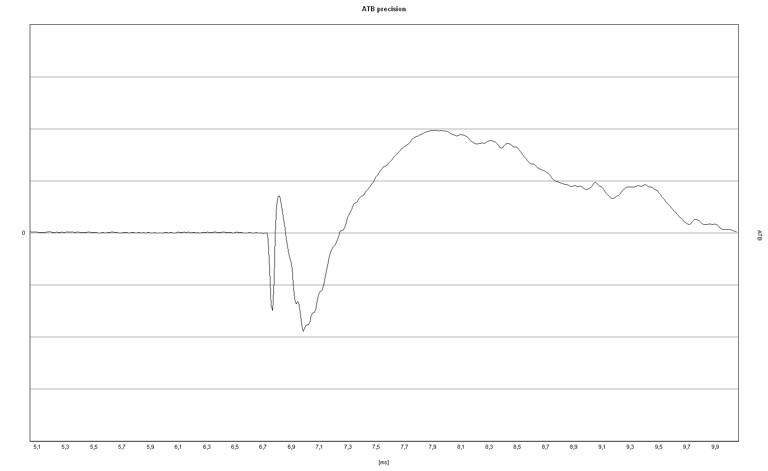
[[Line 1, Cell 3 |
| Kit speaker with full range driver Vifa BGS119.8'
|

|
| DIY project with Tang Band full range driver + 2x Seas WA150 in the bass section
|
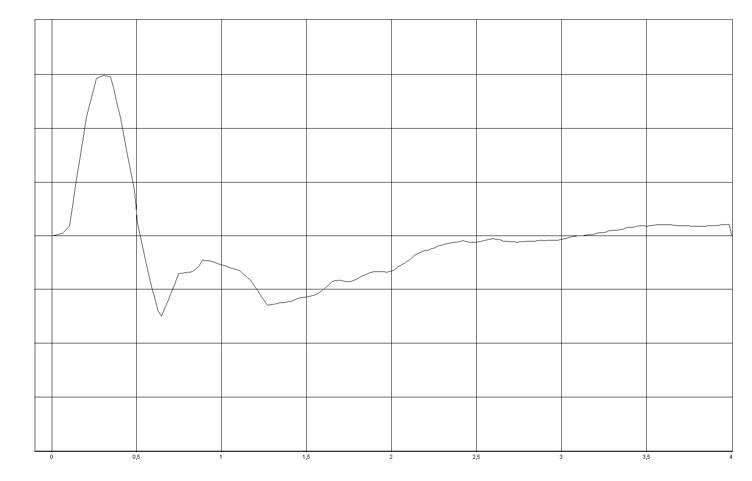
|
| Partially active three-way floorstanding loudspeaker with 2 actively driven woofers | 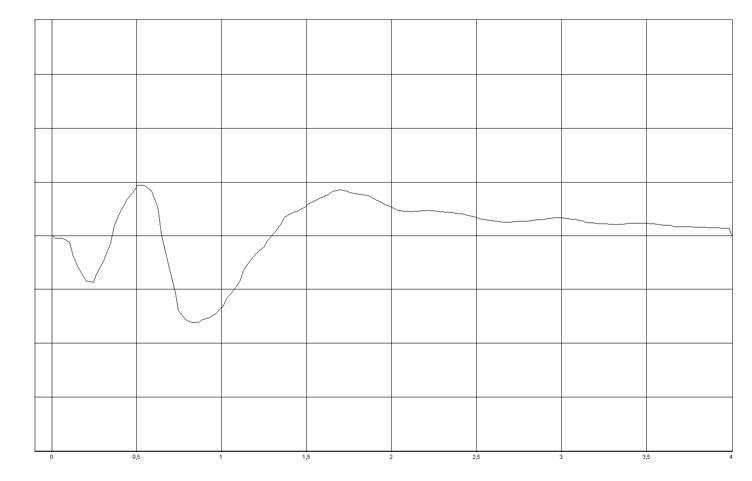
[[Line 2, Cell 3 |
<zurück: Myroklopädie>
<zurück: Myro>
